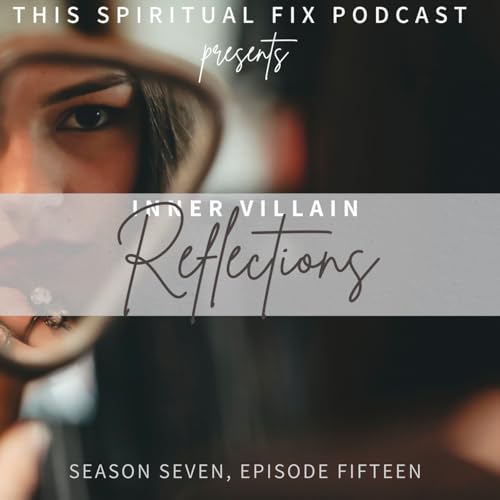
This Spiritual Fix
No se pudo agregar al carrito
Add to Cart failed.
Error al Agregar a Lista de Deseos.
Error al eliminar de la lista de deseos.
Error al añadir a tu biblioteca
Error al seguir el podcast
Error al dejar de seguir el podcast
-
Narrado por:
What meditation works for you? What is it like to do tantra? How do you best communicate with a loved one? Kristina Wiltsee & Anna Stromquist are two best friends on a quest to try all things spiritual in order to attain enlightenment -- or just stay sane while juggling a lot on their plates. Their internationally recognized podcast hits close to home for many people who are struggling for peace amidst the pain of trauma, emotional wounds, and neurodivergent brains. As we uncover deeper layers of ourselves, they teach, with humor, that there is nothing to fix - just more of us to love.
Season Themes:
Season 1: The Primal Wounds (Abandonment, Rejection, Betrayal, Injustice, & Humiliation)
Season 2: The Drama Triangle (The Inner & Outer Persecutor, Rescuer, and Victim)
Season 3: First Chakra (Relationships & Sexuality & The Mother Wound)
Season 4: Second Chakra (Integration of the Multidimensional Self & The Father Wound)
Season 5: Third Chakra (Growing Up and the Money Wound)
Season 6: Fourth Chakra (Primal Wounds Revisited, Villains & Karma Yoga)
www.thisspiritualfix.com
2023. All rights reserved.-
 49 m
49 mNo se pudo agregar al carrito
Solo puedes tener X títulos en el carrito para realizar el pago.Add to Cart failed.
Por favor prueba de nuevo más tardeError al Agregar a Lista de Deseos.
Por favor prueba de nuevo más tardeError al eliminar de la lista de deseos.
Por favor prueba de nuevo más tardeError al añadir a tu biblioteca
Por favor intenta de nuevoError al seguir el podcast
Intenta nuevamenteError al dejar de seguir el podcast
Intenta nuevamente -
 50 m
50 mNo se pudo agregar al carrito
Solo puedes tener X títulos en el carrito para realizar el pago.Add to Cart failed.
Por favor prueba de nuevo más tardeError al Agregar a Lista de Deseos.
Por favor prueba de nuevo más tardeError al eliminar de la lista de deseos.
Por favor prueba de nuevo más tardeError al añadir a tu biblioteca
Por favor intenta de nuevoError al seguir el podcast
Intenta nuevamenteError al dejar de seguir el podcast
Intenta nuevamente -
 Nov 4 2025Aún no se conoce
Nov 4 2025Aún no se conoceNo se pudo agregar al carrito
Solo puedes tener X títulos en el carrito para realizar el pago.Add to Cart failed.
Por favor prueba de nuevo más tardeError al Agregar a Lista de Deseos.
Por favor prueba de nuevo más tardeError al eliminar de la lista de deseos.
Por favor prueba de nuevo más tardeError al añadir a tu biblioteca
Por favor intenta de nuevoError al seguir el podcast
Intenta nuevamenteError al dejar de seguir el podcast
Intenta nuevamente


